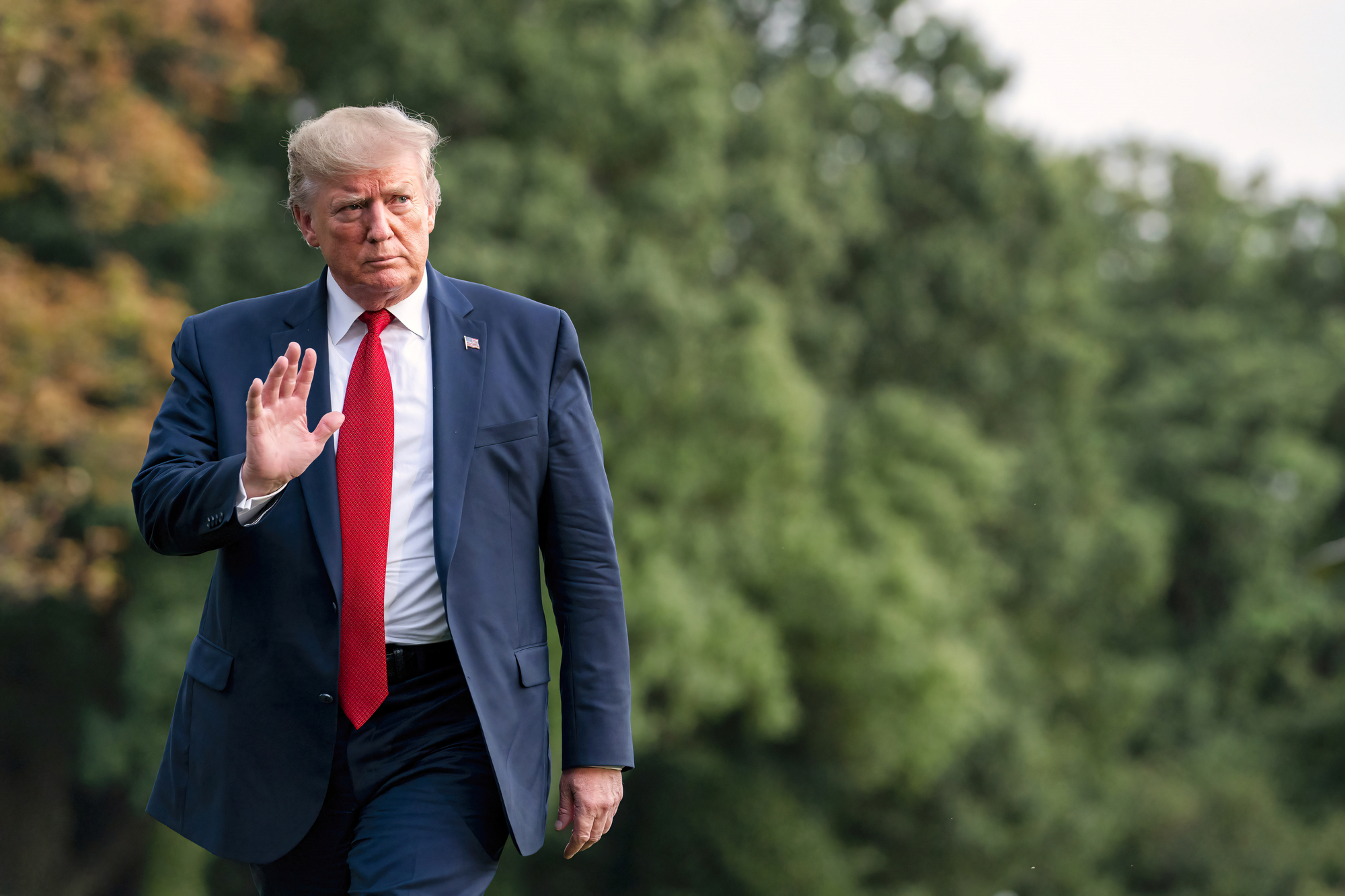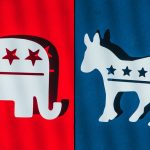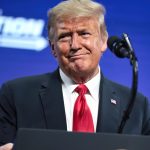In politics, a red tie often symbolizes power, authority, and confidence. Politicians carefully select this vibrant color to command attention and project strength during public appearances and debates. A red necktie paired with a white shirt and blue suit carries deliberate symbolism that communicates leadership qualities to voters without saying a word.
The tradition of wearing red ties has evolved throughout political history. Red hasn’t always represented power, but in modern political landscapes, it has become a visual shorthand for assertiveness and dominance. This color choice is particularly common during presidential debates and important political events where making a strong impression matters.
Color psychology plays a significant role in political image-making. When a politician chooses a red tie, they’re making a calculated decision about how they want to be perceived. Like a peacock displaying its feathers, the red tie serves as a visual signal to constituents about the candidate’s character and leadership potential.
Symbolism of a Red Tie in Politics
Red ties have become powerful symbols in political imagery, communicating specific messages to voters and establishing visual identity cues that transcend verbal communication. The color choice represents more than fashion—it carries psychological, partisan, and historical significance.
Power and Assertiveness in Political Messaging
Red ties project strength and dominance in political settings. This bold color commands attention immediately, helping politicians appear more authoritative during speeches and debates.
Research suggests that red stimulates physiological responses in viewers, potentially raising blood pressure and increasing perceived energy levels. When a politician selects a red tie, they telegraph confidence and decisiveness.
Many presidential candidates wear red ties during critical moments like acceptance speeches or high-stakes debates. This strategic color choice aims to project leadership qualities and determination.
Political consultants often advise candidates to wear red ties when delivering tough messages or when they need to appear strong against opponents. The color works as a visual reinforcement of assertive language and firm stances on issues.
Conservative Associations and Partisan Identity
In American politics, red has become linked with Republican identity, particularly after the 2000 election when television networks standardized color-coding for electoral maps. This association has strengthened over time.
Red ties serve as subtle partisan signals, helping politicians communicate their ideological alignment without explicit statements. Conservative politicians frequently choose red neckwear to reinforce their brand identity.
The color red has historical connections to traditional values in many cultures, which aligns with conservative messaging about stability and heritage. This adds a layer of meaning beyond simple party identification.
Politicians crossing party lines sometimes deliberately avoid their opponent’s color—Democratic politicians might avoid red ties to prevent visual confusion about their affiliation.
Contrast With Blue Ties and Other Colors
Blue ties generally convey trustworthiness, stability, and peace—qualities different from red’s assertiveness. Politicians often switch between red and blue ties depending on their communication goals for specific events.
The contrast between red and blue ties reflects broader political symbolism, with blue representing progressive or diplomatic qualities while red signals strength and decisive action. This visual dichotomy reinforces partisan divisions.
Some politicians purposely wear purple ties to signal bipartisanship or a willingness to work across the aisle, combining elements of both red and blue symbolism. Others might choose neutral colors to avoid partisan associations entirely.
The context matters significantly—a red tie at a national security briefing sends a different message than at a community outreach event. Politicians and their advisors carefully consider these contextual factors.
Visual Impact and Perception
Red ties create high contrast against traditional white shirts and dark suits, making the wearer more visually memorable in photographs and television appearances. This visual impact helps politicians stand out in crowded fields.
The camera responds particularly well to red, making it a strategic choice for televised appearances. The color appears vibrant on screen and draws viewers’ eyes directly to the speaker’s face.
Perception studies show that audiences may judge speakers wearing red as more capable and powerful than those in other colors. This psychological effect can subtly influence voter impressions during debates or interviews.
Red ties work best when the politician needs to project conviction rather than compromise. For announcing policy positions or critiquing opponents, the color reinforces messaging through visual cues.
Even subtle variations in shade matter—brighter reds suggest more aggressive stances while deeper burgundy tones convey established authority with slightly less confrontational energy.
Historical and Contemporary Use by Political Figures
Red ties have become a staple in political wardrobes across different eras and parties. Political figures carefully select their neckwear as part of their visual messaging strategy.
Donald Trump’s Signature Red Tie
Donald Trump has made the red tie his distinctive trademark throughout his political career. His preference for bright, solid red ties paired with dark suits became so consistent that it developed into a key element of his personal brand.
Trump typically wears his ties notably longer than the traditional length, often extending past his belt. This style choice sparks debate among fashion critics but reinforces his outsider image in politics.
The vivid shade of red in Trump’s ties aligns with his bold, assertive communication style. According to color psychology experts, his tie choice projects strength and dominance during appearances, debates, and rallies.
Barack Obama’s and Hillary Clinton’s Tie Choices
Barack Obama took a more varied approach to his neckwear, alternating between red and blue ties depending on the occasion and message. During bipartisan events, Obama often chose purple ties—a blend of red and blue—symbolizing unity across party lines.
For key speeches and State of the Union addresses, Obama frequently selected blue ties to convey trustworthiness and calm leadership. His tie choices reflected his measured approach to communication.
Hillary Clinton adapted the symbolism of neckwear to women’s fashion through her use of red pantsuits and accessories during her 2016 presidential campaign. Her strategic use of red projected power and authority in settings traditionally dominated by men in suits and ties.
Red Ties in Presidential Debates
Presidential debates feature calculated wardrobe decisions, with red ties playing a central role in visual messaging. Candidates use them to appear authoritative and commanding on stage where every detail matters.
In the 2004 debates, George W. Bush consistently wore red ties while John Kerry often chose blue, visually reinforcing their respective party identities. This pattern has evolved into a recurring feature of American political theater.
Research suggests that wearing red during debates may provide a subtle psychological advantage. Studies show viewers may perceive candidates in red as more dominant or assertive, potentially influencing subconscious judgments about leadership capability.
The 2016 presidential debates highlighted this phenomenon when both Trump and Clinton incorporated red into their debate attire, recognizing its power to communicate strength during these high-stakes televised events.
Red Ties and Political Fashion Trends
The use of red ties in politics serves as a visible statement of power, authority, and party alignment. Color psychology plays a significant role in how politicians present themselves to the public and project confidence during appearances.
Men’s Political Neckwear and Fashion Codes
Red ties have become a staple in political wardrobes across party lines. Politicians select this bold color to project strength and command attention during debates, speeches, and public appearances. Republicans have particularly embraced red neckwear as part of their visual identity, connecting to their party’s color association.
When political figures face important moments—presidential debates, State of the Union addresses, or campaign rallies—red ties often appear in higher frequency. This is no accident. The color red stimulates viewer response, creating impressions of dominance and authority.
Fashion analysts note that tie selection represents one of the few areas where male politicians can express personality within the strict confines of traditional political attire. While the standard dark suit remains constant, neckwear choices signal subtle messages to constituents and opponents alike.
Coordinating Red Ties With Shirts and Suits
The classic pairing for a red tie remains the white shirt and navy suit combination. This trinity of colors—red, white, and blue—creates a patriotic visual that resonates with American voters regardless of party affiliation.
Texture also matters in political neckwear. Silk ties with subtle patterns or solid colors tend to appear most frequently, as they photograph well and don’t distract from the politician’s message. The width of ties shifts with fashion trends, but political figures typically avoid extremes.
The red tie works effectively against dark suit backgrounds, creating a focal point that draws viewer attention to the face and upper body. This helps emphasize hand gestures and facial expressions during speeches.
For formal political events, bright scarlet or crimson shades project maximum authority, while darker burgundy tones communicate seriousness and tradition. The specific shade can be adjusted based on the event context or the impression the politician wants to make.
Comparing Red Ties to Other Tie Colors in Politics
Political leaders select tie colors with specific meanings in mind, creating visual cues that communicate their values and intentions to the public. Each color carries distinct psychological and cultural associations that can shape public perception.
The Role of Blue, Yellow, and Other Tie Colors
Blue ties rank just behind red in popularity among politicians, with about 30% choosing blue tones compared to 38% opting for red. Blue conveys honesty, trustworthiness, and tranquility – qualities many politicians want to project.
When politicians wear blue ties, they often aim to appear more approachable and calm compared to the power-signaling red tie. Blue can suggest stability and dependability rather than aggression or dominance.
Yellow ties communicate optimism and creativity, though they appear less frequently in high-stakes political settings. Green ties might signal environmental concerns or new beginnings, while purple can suggest bipartisanship by blending red and blue.
Brown or tan ties rarely feature in major political appearances as they lack the visual impact of brighter colors. Politicians typically reserve these more subdued colors for casual or specific regional events.
Cultural and Psychological Implications of Tie Colors
Tie color preferences vary across different political contexts and cultures. In the United States, the association between red ties and Republicans and blue ties and Democrats has solidified since the 2000 election, though politicians from both parties wear both colors.
Research suggests tie colors affect how viewers process information. Red ties draw attention to detail and project authority, while blue creates an impression of openness and cooperation. This explains why negotiation situations often see politicians alternating between these colors based on their goals.
A politician might choose a color based on the message of the day or the audience they’re addressing. Debate performances often feature red ties to project strength, while town halls might see more blue ties to facilitate connection.
Cultural contexts matter too – in some countries, certain colors carry unique political associations different from American norms. Personal factors can influence choices as well, with some leaders consistently wearing their favorite color regardless of conventional meanings.





